
|
|
ENCYCLOPEDIA OF RADIO ELECTRONICS AND ELECTRICAL ENGINEERING Beverage antenna. Encyclopedia of radio electronics and electrical engineering
Encyclopedia of radio electronics and electrical engineering / HF antennas The Beverage antenna, or, as it is also called, the traveling wave antenna (ABV), is widely used in professional radio communications. Most transoceanic QSOs on 160 meters are made by radio amateurs using the Beverage receive antenna. The instructions for the R126 radio station indicate that when using a quarter-wave pin, the communication range between two radio stations of the same type is 2 km, when using ABV - 4 ... 5 km. For the R 105 radio station, the communication range when using a whip quarter-wave antenna is 6 km, when using ABV - up to 25 km. I hope these figures, repeatedly verified by the military, will convince the opponents of the Beverage antenna that there really is something in it. The Beverage antenna can operate without tuning in all amateur bands with minimal manufacturing costs and does not need to be tuned when changing operating bands. This feature of it attracts not only radio amateurs, but also fans of long-range reception of broadcast stations. 1. BEVERAGE'S IDEAL ANTENNA The classic ABC is a wire whose length is several times the wavelength on which the antenna operates. It is loaded with a resistance equal to its wave resistance (Fig. 1). The suspension height of ABV is from 1 to 5 m, depending on the frequency range in which it is used.
The input impedance ABC is high and equal to the wave impedance of the line formed by the wire that makes up the antenna sheet and the ground, which plays the role of the second wire. It is 400 ... 600 ohms. When hanging ABV, there is no need to maintain an equal height of the suspension everywhere. At 160 meters, an antenna with a suspension height of 3 ... 5 m effectively works, and on a 10-meter band - with a suspension height of at least 1 m. The gain factor ABV is equal to: G=Kx(L/l), where G is the gain factor; K is a coefficient that does not depend on the quality of ABV manufacturing; L is the length of the antenna; l is the wavelength at which the antenna operates. The longer the antenna web, the higher its gain. The Beverage antenna receives a vertically polarized wave incident on it at a slight angle. Such characteristics have a surface wave, which is within sight, of a radio station and a wave of a distant radio station, reflected from the ionosphere at a small angle. In the horizontal plane, the reception maximum lies in the direction parallel to the antenna web. With a perpendicular incidence, an electromagnetic wave simply will not induce anything in the antenna, and when incident at an angle, due to the addition of voltages induced in the antenna with different phases, the latter will compensate each other.
D.N. The Beverage antenna is a narrow beam in the horizontal and vertical planes, directed towards the load (Fig. 2). With a significant excess of the length of the antenna web over the wavelength, fragmentation of the D.N. on the petals. The smaller the D.N. back lobe, the better the antenna is matched to the load. 2. "EARTH" ANTENNA VEVEREDZH The work of a real ABV largely depends on the quality of the "ground". It is best to run some "ground" wires from the load to the generator.
In practice, if you intend to use ABC for transmission, then at least 3 "ground" wires are laid for efficient operation. One is under the antenna sheet, and the other two are at the edges from it at a distance equal to (0,5 ... 1) the height of the antenna sheet suspension (Fig. 3). To increase the efficiency of these wires, they must either be raised above the ground to a small height (5 ... 10 cm), or protected from corrosion if they still lie on the ground.
When using ABC as a receiving antenna, only one ground wire can be used. Sometimes, at receiving centers, instead of a "ground" wire, 10 ... 30 counterweights are used, about 0,1 of the length of the antenna, located at the end of the load and the transformer and buried to a depth of 10 cm (Fig. 4). However, this does not save the wire for the counterweights and in some cases increases the noise of the antenna due to the fact that it includes parts of the earth that can serve as a source of noise. It is usually very difficult to identify a specific source of noise. It can arise due to currents flowing in the earth's crust; may be due to the action of industrial factors (overhead power lines, underground power lines, etc.). At receiving radio centers, areas are chosen where there are no such effects, and in your case it may well turn out that QTH is located just near such a noise source. The Beve Reggia antenna is most susceptible to these noise sources, especially without the ground wire underneath. For transmission, such an antenna (Fig. 4) will not work satisfactorily. This is due to the fact that the ground resistance R3 is included in the antenna circuit, which is generally comparable to the wave impedance of the antenna and significantly reduces its efficiency. When using ABC for reception, this can be tolerated, since receivers usually have a gain margin. But when working on transmission, efficiency is the main indicator of the antenna. We should not forget that the soil can freeze in winter to a considerable depth. This will significantly reduce the already low efficiency of the Beverage antenna (Fig. 4). But often, for many reasons, it is difficult or impractical to use a "ground" wire under the antenna sheet. In this case, a so-called "beam" antenna is used. 3. USE OF QUARTER-WAVE COUNTERWEIGHTS AS A "GROUND" The "beam" antenna used to operate on P105 radio stations is shown in Fig. 5. It is a wire with a length of 1, which is about ten wavelengths, to which several quarter-wave balances are connected through a 400 ohm resistor. Several of the same counterweights are connected to the body of the radio station.
The current in such an antenna flows due to displacement currents in the space between the counterweights. The current in the soil in this case does not play a big role. To increase the efficiency, it is necessary to strive to reduce the resistance of the counterweight system. With an antenna impedance of 400 ... 600 Ohm, it is desirable to use at least 2 resonant balances on the load side and the power side. When using ABC in different ranges, it is necessary to use at least 2 quarter-wave resonant balances for each range for each range. An antenna with quarter-wave counterbalances differs from the classical ABV in that it does not have continuous frequency overlap. 4. LOADING THE BEVERAGE ANTENNA Approximately 30 to 50 percent of the transmitter power is dissipated in the load, so it is essential that the load resistor is non-inductive. When designing Beverage transmitting antennas, you can use MLT-2 type resistors connected in parallel. Structurally, they are arranged in a ring. To protect such a load from atmospheric influences, it is painted with a durable varnish. It is advisable to exclude direct rain on it by placing it under some kind of cover. Usually, a load of about 300 ... 600 ohms is used for the Beverage antenna. It is difficult to accurately determine the characteristic impedance of the antenna; in practice, this can only be done by changing the load and measuring the SWR of the antenna. 5. LENGTH AND EFFICIENCY OF THE BEVERAGE ANTENNA It was stated above that the gain of ABC depends on its length, but the best results are obtained when the length of the antenna is a multiple of an odd number of half-wavelengths. For successful operation, it must be at least the wavelength at which the transmitter operates. To determine efficiency, consider where the energy loss occurs. First, in the load resistor RH. Secondly, the longer the antenna, the greater the radiation, the intensity of which increases with the height of the suspension (H) ABV above the ground. Thus, the efficiency can be approximately determined by the formula: Efficiency = 1 /Rн*L/l*Н/lЗ*К, where L is the length of the antenna; l - wavelength; K - coefficient of efficiency. To increase the efficiency and improve the directional properties of ABVs, their parallel connection is used. At the same time, they are arranged both in parallel and in series (Fig. 6).
The efficiency of a Beverage antenna with a length of one wavelength with a suspension height of about 0,005 wavelength does not exceed 10 percent. Increasing the antenna length to 6 wavelengths increases the efficiency to about 40%, then the increase in efficiency slows down. 6. CHANGE D.N. ANTENNAS OF BEVERAGE One of the main disadvantages of ABC is that its D.N. fixed. I tested a version of the Beverage antenna with two transformers (Fig. 7), which allows you to switch D.N. in two directions. When a constant voltage is applied through the cable, the relays are triggered and the connection and power points are reversed (relays of the RMug type are used). Such an antenna had an SWR of no more than 1,8 in the entire frequency range from 1,8 to 30 MHz, the difference when switching the direction of radiation varied from 1 ... 2 points at low frequencies to 6 points at high frequencies.
There are recommendations for installing a round Beverage antenna. In this case, the radiation pattern of such an antenna is a circle, but its gain will be less than that of a dipole. If there is a sufficient amount of open line or CATV, a simplified switching of D.N. The antenna scheme for this is shown in Fig. 8. With this design of the antenna, the open line must be raised above the ground. The attenuation of the antenna increases and its efficiency decreases. But if the antenna is used for reception, such a construction is quite acceptable. To switch direction D.N. in this case, you can even use an ordinary toggle switch.
7. INSTALLING THE BEVERAGE ANTENNA For successful operation, ABC must be correctly installed relative to foreign objects. Of course, the ideal setup is when there are no conductive objects nearby. However, in practice this is rarely the case. You should strive to ensure that there are no conductive objects in the main and, if possible, in the back lobe. Since ABV emits a vertically polarized wave, attention should be paid to vertical conductive objects. A very good option is to install on the edge of the roof of the house, when in the main lobe D.N. there is free space. It is this ABC that has been used since 1989 at my UZ3ZK station. There are often radio and telephone wires on the roof that can run parallel to your ABC. They will be treated as "ground" and will carry significant currents that may interfere with multi-program broadcasts and possibly telephone communications. To eliminate this effect, it is enough to lay a "ground" wire next to these wires. In all cases that I encountered, there were free "horns" on the posts for its installation. The wire should be grounded near each of the masts. In severe cases, it may be necessary to install several of these wires at a distance of 20 ... 50 cm from each other. In general, the Beverage antenna is one of the most unpretentious antennas. A clean space within a radius of about 1 ... 2 meters relative to the antenna web will ensure its operation. None of the neighboring antennas interferes with it, just as the ABC has a minimal effect on other antennas. In terms of lightning, ABV is safe. Its canvas is grounded on both sides, so that even a direct lightning strike into it will not lead to the defeat of the operator and the destruction of radio equipment. ABV is usually located below other conductive objects, which provides additional protection from thunderstorms. ABC does not accumulate 1 electrostatic, and this is especially noticeable when taken before a thunderstorm. You can work on it even during a thunderstorm. one Literature. 1. G.Z. Aizenberg, Shortwave antennas, M.: Radio and communication, 1985. Author: I. Grigorov, Belgorod; Publication: N. Bolshakov, rf.atnn.ru
Machine for thinning flowers in gardens
02.05.2024 Advanced Infrared Microscope
02.05.2024 Air trap for insects
01.05.2024
▪ Even one cigarette a day is very dangerous for health
▪ section of the site Riddles for adults and children. Article selection ▪ article In our business, the most important thing is to escape in time. Popular expression ▪ article Who are the Templars and why were they called that? Detailed answer ▪ article Catamaran on mattresses. Personal transport
Home page | Library | Articles | Website map | Site Reviews www.diagram.com.ua |






 Arabic
Arabic Bengali
Bengali Chinese
Chinese English
English French
French German
German Hebrew
Hebrew Hindi
Hindi Italian
Italian Japanese
Japanese Korean
Korean Malay
Malay Polish
Polish Portuguese
Portuguese Spanish
Spanish Turkish
Turkish Ukrainian
Ukrainian Vietnamese
Vietnamese

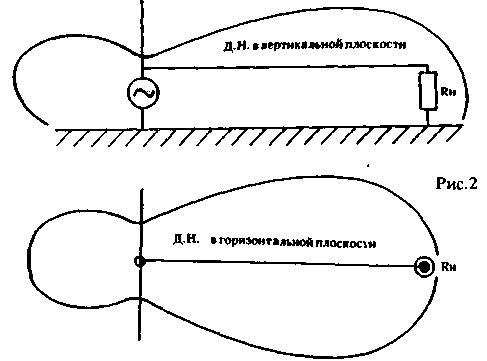
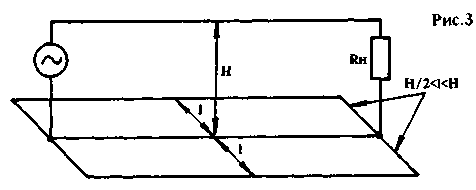

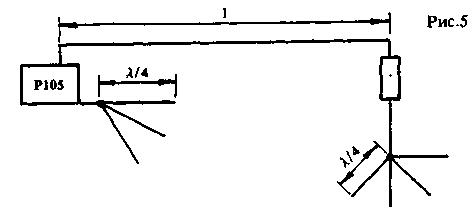
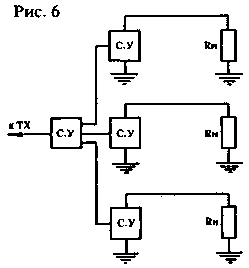
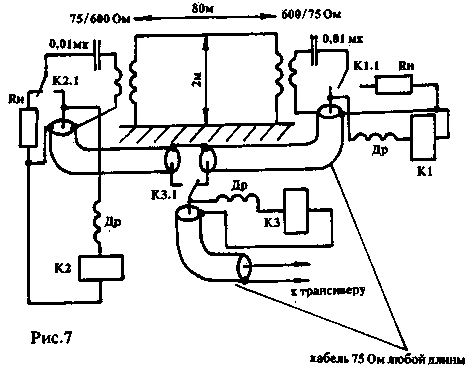
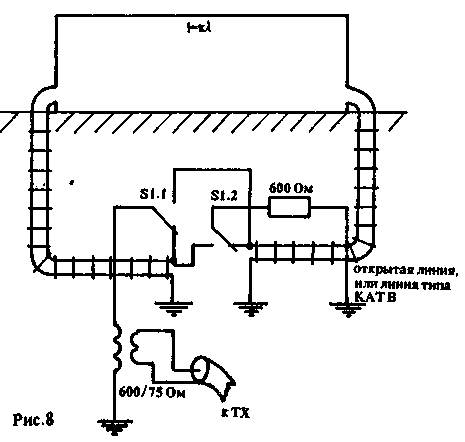
 Leave your comment on this article:
Leave your comment on this article: